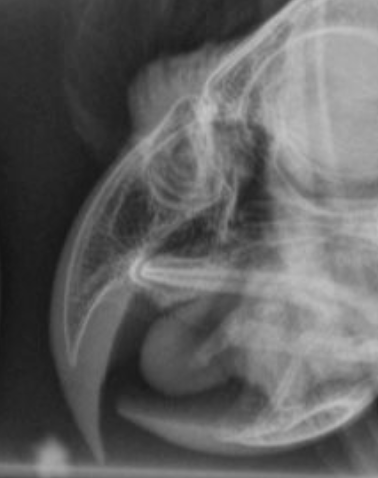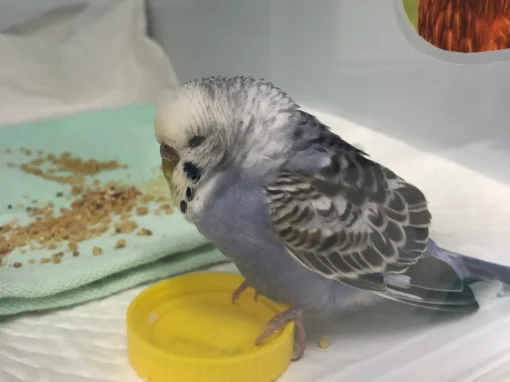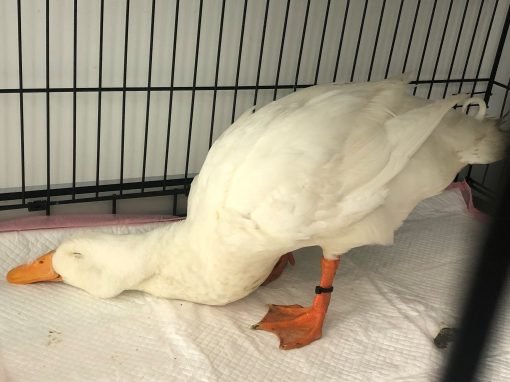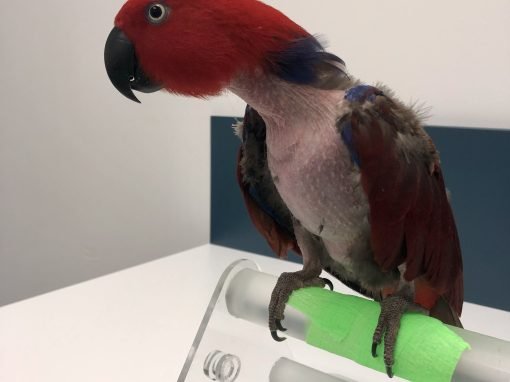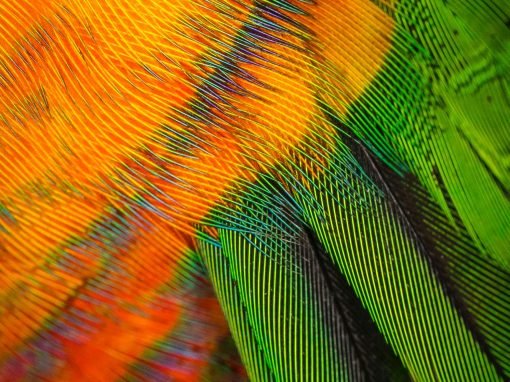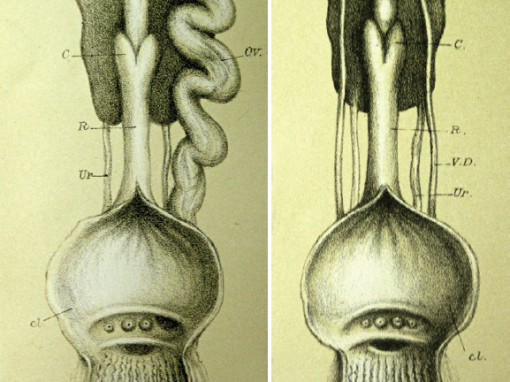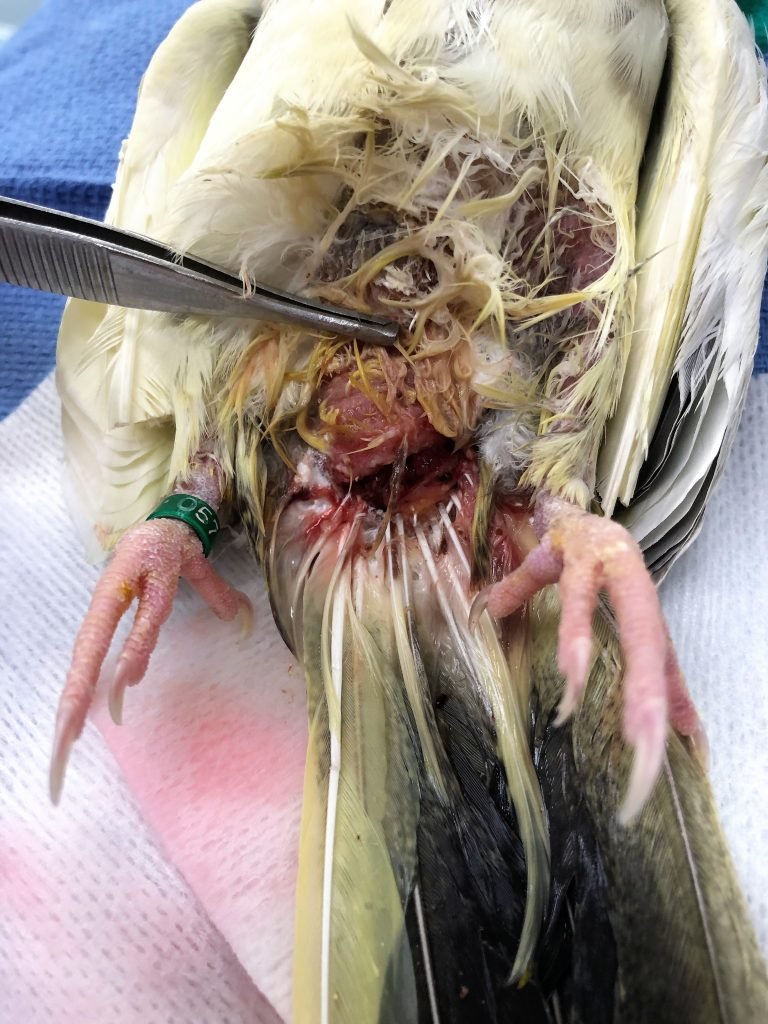
Wing clipping is a procedure commonly performed in birds, however, considering the negative implications on birds’ physical and psychological well-being (including increased risk of cardiovascular disease, keel and tail base injuries, osseous lesions, obesity, and behavioral problems), it’s not surprising that it’s illegal in some countries.
As veterinary professionals, being in a position to educate colleagues, breeders, pet shops, and bird owners about this procedure is an important step in the right direction for bird welfare.
An excellent webinar on the topic is available on the Lafeber page for those interested in learning more. A client information sheet is available on the pet info page.
This is an image of a recently acquired young cockatiel with a tail base injury due to frequent heavy landing and crashing from a wing clip.
Fledging is the life stage at which young birds emerge from the nest, with their feathers grown, and learn how to fly. They will exercise their wings and muscles, and are keen to take off! Learning how to take off, navigate and land safely is an important part of their development. Unfortunately, this is also the age at which young birds under human care often have their wings clipped. Their natural desire to fly is still there, resulting in traumatic and painful falls and misinterpreted as “clumsiness”.

